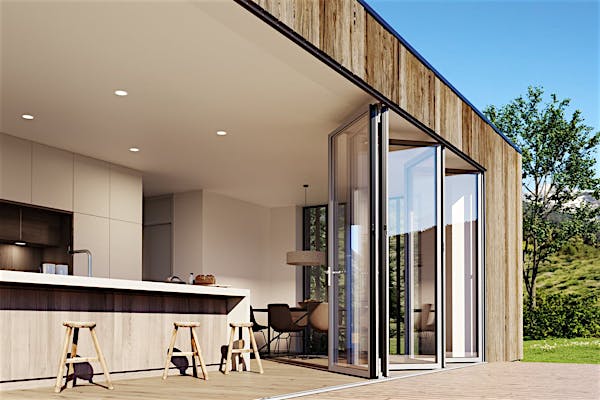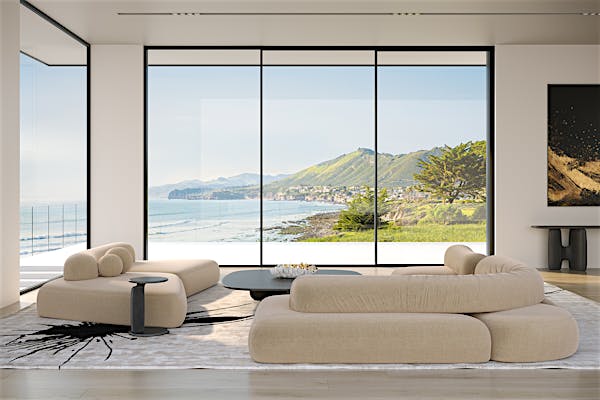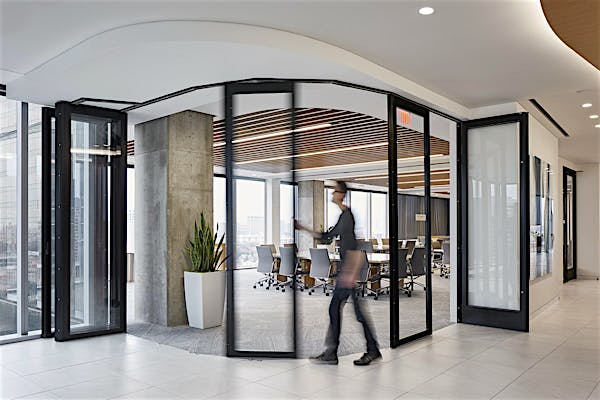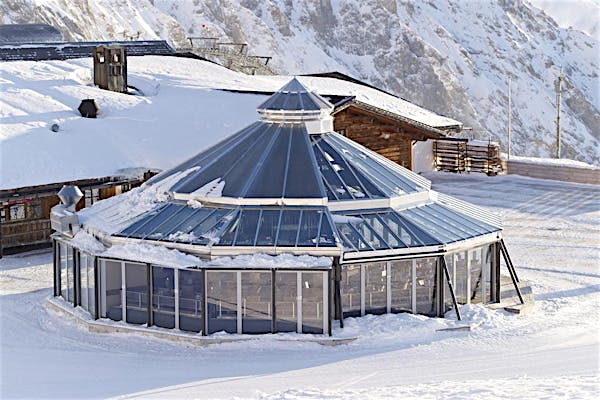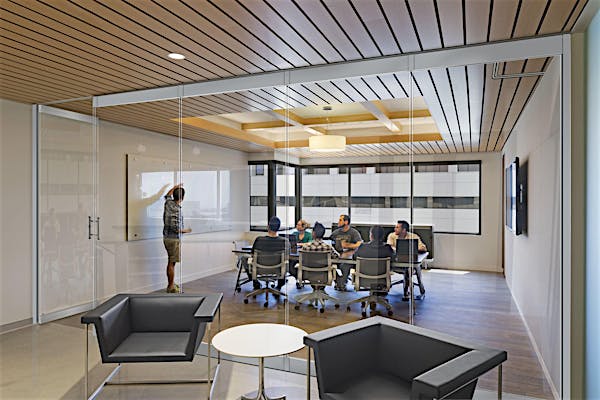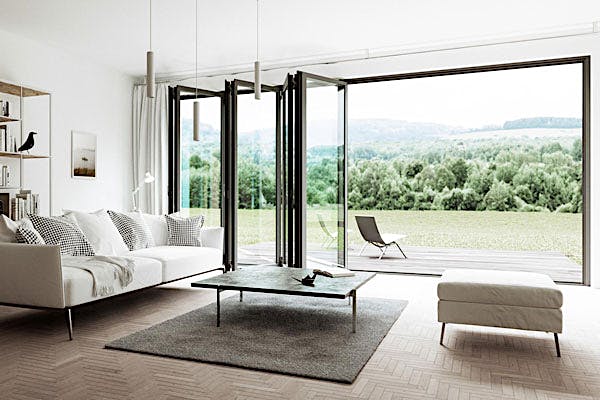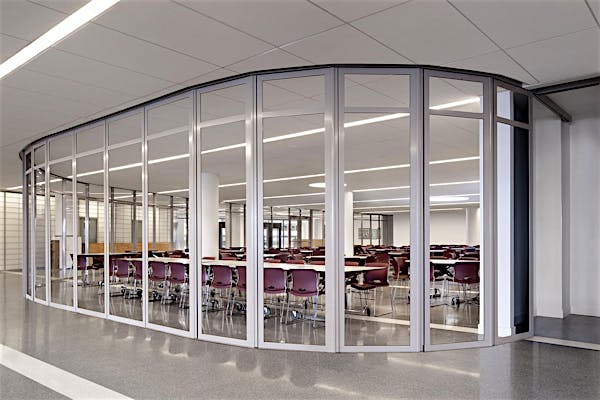Frequently Asked Questions
General
NanaWall has over 45 sales representatives within the USA, Canada, Mexico, the Caribbean, and Central America. Although your local NanaWall representative may be able to come to your job site, it is always best to start out with a phone discussion. To find your local representative, use our Rep Locator.
NanaWall offers 25 showrooms nationwide. If there is no showroom available in your area, contact your local NanaWall representative who may be able to direct you to local commercial projects with NanaWall installations.
Our CAD Wizard can provide you with all the design files you may need. Here are the files we offer:
- CAD
- SketchUp files
- Revit files
- IFC model files that can be imported in ArchiCAD
For further questions related to our Revit models contact us at [email protected] or Revit Support
NanaWall offers many types of files available for download in our CAD Wizard. You can download CAD, SketchUp, IFC, and Revit files. For the CAD details, customers can download them in PDF, DXF, and DWG formats or use our 3D CAD/Revit/Spec Configurators.
Customers may also access the appropriate CAD details for their specific project directly from their quote.
Yes, customers can make adjustment in CAD, Revit, and SketchUp. Please refer the size chart on the product – option page for allowable limitations or use our 3D CAD/Revit/Spec Configurators.
Yes, we have a dedicated Design Team that specializes in finding a configuration concept that fits your specific project needs. You may send in your project plans for review to [email protected]. A member of our Dedicated Design Team will review and contact you shortly thereafter to discuss.
Additionally, we offer a courtesy design consultation with a NanaWall architect using web conferencing. Simply select and schedule a date and time.
We have a NanaWall 3D Configurator Tool to assist with your design. You can select from several stacking options to determine an approximate stacking area.This blog offers further insight on our customizable stacking options.
To schedule an AIA Lunch & Learn with NanaWall Systems, including virtual sessions, send a request to [email protected] or contact your local NanaWall representative. We also have a dedicated webpage for AIA Approved Continuing Education Courses.
This blog addresses the main topics covered by our CEU courses.
You may request Brochures from our Brochures Page. Our Architectural Binder is found online here.
The best way to tell if you have a NanaWall is to look at one of the handles. If the handle says NanaWall or Solarlux, it is most definitely a NanaWall. If there are no identifiable markings, then take a couple photos of your system and send them to [email protected] for assistance.
For additional information, check out how to differentiate NanaWall from other products.
Yes, we offer our products at window height as well as Tilt Turn and Fixed window systems to meet your design criteria. Window/Door combination is available as well and is ideal for kitchen transition projects.
Yes, we recommend these fully retractable screening options to coordinate with NanaWall systems.
Some of our products may be suitable to use on a boat, however, it will be best to discuss your specific needs with your local NanaWall representative.
Product Specific
Many variables determine the best system for your application:
- Is this a residential or commercial project?
- Is it an interior or exterior installation?
- Where is your project located?
- How big is the opening?
- Is it a ground-floor application or a high-rise?
Each system has its own features and benefits engineered to solve specific design requirements. Learn more about our product families including: Folding, Sliding, Stacking, and Frameless. View and Download Our Comprehensive Buyer’s Guide to NanaWall Folding Patio Doors
For many architects and designers, the reason is the “WOW” factor. When you open a large glass door with ease, there is a change in the occupants’ psychological aspect of the space. The benefits to name a few, are natural daylight, fresh air ventilation, views, and indoor/outdoor connection. Check out our blog on how NanaWall promotes the biophilic design principles and an open concept living; both enhancing the value of your property.
For additional information, this blog clarifies common misconceptions buyers have towards opening glass wall.
There are a number of factors that help us determine the best system for your application including:
- Is this a residential or commercial project?
- Is it an interior or exterior application?
- What city and state is your project located in?
- How big is the opening?
- Is it a ground floor application or a high-rise?
Each system has its own features and benefits engineered to solve specific design requirements. NanaWall provides only the appropriate system for a specific application need. We have four distinct product families: Folding, Sliding, Stacking, and Frameless.
Read more about Folding vs Sliding Doors: Which to Choose?
Yes, we offer solid inserts that be used in place of glass. NanaWall makes several single track stacking systems that can be stored in a storage pocket or parking bay. For detailed animations of the diverse stacking configurations available with these systems, see what's possible with NanaWall
Our minimal sliding glass door cero® can also stack into a pocket.
Yes, learn about our unique positions in the Folding Specialty Configurations and Sliding Custom Stacking Configurations.
For more design inspiration, check out our blog on curved and open corner systems.
NanaWall has two distinct types of Stacking Glass Doors. With Single Track Stacking systems, each panel is supported by two carriers and moved independently into position. Single Track Stacking systems have a no floor track required option in certain applications. Panels can be stacked outside the plane of the opening and into a parking bay. While with the Minimal Sliding system, massive panels move on a recessed floor track to stack on the plane. For information on what could work best for your project.
This blog offers more insightful information on no floor track designs.
The use of a top-hung or floor mounted folding doors should be determined by either your architect, contractor, or structural engineer. They will be best suited to make a recommendation for your project. We recommend the use of structural header for the required wind loads and deflection of your system.
NanaWall offers a variety of sill options for both floor supported systems and top-hung systems. Learn about why NanaWall recommends floor supported folding doors systems as the best choice for remodels.
A structural header is required for top-hung systems and recommended for floor supported systems. Although we have a number of top-hung systems available, a structural header is necessary to carry the load and deflection requirements of the system. To determine the load requirements and deflection of your structural header, visit our Technical Documents section / Installation Manual.
With most NanaWall systems, there is only the need to lock the system at one or two locations. When working with our HSW single track stacking no floor track system, it would be necessary to lock each panel individually into place.
NanaWall provides a variety of ways to have swing doors. For Folding systems, any odd panel in a configuration can be used as a primary swing door. For example, if you had 9 panels and you wanted the center panel to operate as a swing door, then you could use 4L5R and the fifth panel from the right would be a swing door.
Single Track Stacking systems can have an “ incorporated swing door.” This makes it possible to convert an intermediate sliding panel into a swing door with a simple operation.
All of our products are manually operated except for the minimal sliding cero that has an automated option.
The maximum size possible is determined by a number of factors including system selection, glass choice, and configuration. We restrict the size of panels to ensure ease of operation and durability.
As a general rule of thumb, our systems weigh about 5.5 lbs/ft². Once the product is ordered, we can provide you with the exact weight of your system.
With our Folding Glass Doors, the maximum system height is 12′ tall, the maximum system length is 43′ wide, and the maximum number of panels possible is 12. Wider widths are possible with optional left/right panel sets for select systems.
With our Single Track Stacking Glass Doors, the maximum system height is 12′ tall, the maximum system length is unlimited (our record is 323 feet), and the maximum number of panels possible is unlimited.
Offering the largest panels available in the NanaWall product line,Sliding Glass Doors panels reach sizes as large as 9′ 10″ w x 13′ 1″ h.
Send your design concept to [email protected] to see how NanaWall best fits into your project.
NanaWall offers these different sill options:
- Higher Weather Performance Raised sill
- Performance sill
- Low Profile Saddle sill
- Low Profile Saddle with UniverSILL
- Flush sill
- Surface Mounted sill
- Floor Sockets (for our Single Track Stacking systems and CSW75)
When deciding on the type of sill to use for your project, talk with your local NanaWall representative for a recommendation specific to your needs and suitable for your climate. Also, reference the options selection for each system to determine the floor tracks available.
Depending on your exact application, generally, the Higher Weather Performance Raised and Performance sills of any system are more weather resistant than Saddle or Flush sills. Nevertheless, testing by NanaWall Systems, Inc. indicates that if the Low Profile Saddle sill is field modified to provide for proper drainage, good water resistance as per industry testing standards can be achieved.
The Flush sill is best used for interior applications. The Surface Mounted Interior sill is best used in interior applications where a minimal recess of the sill is needed. See the testing section of each system for sill modifications and specific results.
We also offer ADA-compliant sills for projects that demand this requirement.
Yes, we offer solid inserts that can be used in place of glass. Using a horizontal mullion to divide the panel will allow you to accomplish either. Using a translucent matte glass on the bottom and then a clear glazing on top is one way that you can maximize your natural light while maintaining privacy.
We offer glass options that meet the needs of thermal performance and acoustics as well as aesthetics with frosted glass, white board glass options, and colored interlayers. Consult your NanaWall representative for further guidance.
A bird safe glass is specifically designed with ultraviolet patterns to stop bird collision; often possible when systems are in a natural habitat. See how this project utilized bird safe glass with our NanaWall systems.
We offer 50 Standard Colors and a variety of RAL colors. Review finishes with each system under “Options”.
Yes. We have 50 Standard powder coat finishes to choose from, some of which match popular colors of the major window brands like Marvin, Andersen, and Pella. We also offer custom color matching if desired. Be sure to review your product selections and options with your local area NanaWall representative to help make the best decision for your project.
We offer wood framed Folding and Stacking glass walls with a variety of solid, natural wood species. Wood systems come sand-sealed for final finishing onsite. Explore Our Quality Wood Finishes.
Learn about how our Wood Framed glass walls compare to Aluminum Framed glass walls.
NanaWall does not have any vinyl doors. You can choose from Aluminum Framed, Wood Framed, Aluminum Clad, or Frameless finishes. Explore our Design page.
NanaWall makes more than 20 unique systems with multiple glass options so that you receive the best weather protection no matter what conditions you face. With over 500,000 panels installed throughout North America, NanaWall have performed in snow-covered mountains down to coastal hurricane regions and across deserts.
Explore more about how our systems are used to meet thermal performance requirement of different climate conditions.
As aluminum is a conductor of energy, with the standard system SL45, there is heat transmission through the aluminum profiles. With thermally broken systems, SL60, NW Acoustical 645, SL70, SL73,SL82, NW Aluminum 840, HSW60, and cero, a fiber glass reinforced polyamide material between the inside aluminum profile and outside aluminum profile provides a thermal break to energy transmission. Thermally broken systems are best used when low thermal “U” values are needed.
Additionally, this blog details the energy requirements met by our thermally broken aluminum systems.
The U-Value of NanaWall systems can be found within the Performance section of each system. To obtain the R-Value of a specific NanaWall system, simply divide 1 by the U-Value. This will give you the R-Value of the system.
Our systems offer large openings that facilitate social distancing as well as fresh air ventilation and abundant daylight, two essential key factors that have been proven to improve overall health and wellbeing. These solutions can be utilized in various applications such as residential, commercial and education.
Explore six different ways to improve indoor air quality in this NanaWellness blog.
Yes. NanaWall uses recyclable aluminum, environmentally friendly powder coat paints, water-based wood finishes and recyclable packing material. Although we do not assign points for your project, we do offer assistance working with the US Green Building Council.
Explore more about LEED and other emerging green-building certifications.
Yes, NanaWall can help meet ADA requirements.
Swing panels can be designed to meet width requirements for ADA compliance. A NanaWall system can be prepped for recommended closer and panic hardware by others.
Our Flush and Low Profile Saddle sills with partial or full insert meet ADA compliance. Our ADA-compliant Flush sill for SL45 and the Surface Mounted Flush sill are compliant. Optional Floor Sockets for our Single Track Stacking systems and CSW75 are also ADA-compliant.
STC is a unit of measure of how much airborne sound energy is diminished across a boundary wall or partition. It is mostly used for interior spaces. With STC, the higher the rating means the greater the sound attenuation capabilities of the interior partition.
Glass STC is the rating of just the glass. Unit STC is the rating of the entire system including the framing, gaskets, and the glass. Our Acoustic Performance page offers a more in-depth description on the topic.
No, NanaWall systems are not fire rated or smoke rated.
Yes, we do offer Impact-Rated Opening Glass Walls for Hurricane Prone Areas. Our SL73 Hurricane system meets the Miami-Dade County NOA Hurricane Requirements. Inswing Approval: FL #20107.1; Outswing Approval: FL #20107.2. The Florida Product Approval for inswing model is FL20108 and outswing model is FL20107. Being that these are some of the strictest standards in the world, we are confident the SL73 will stand strong.
Explore more about Miami-Dade certification requirement and our hurricane resistant glass wall.
Many factors besides wind speed need to be considered for meeting structural requirements. Some other factors include: the relevant code requirements, proximity to the coast, type of building, height of building and where the unit is to be used in the building. What is needed are the positive and negative design wind loads provided by the project structural engineer.
This blog on wind load resistance preparation for hurricane season offers additional information for high-wind applications.
Yes, NanaWall is a single source provider of opening glass walls.
As single source providers, we engineer and independently test our exterior application systems in accredited and certified labs for air and water penetration resistance, structural deflection, thermal performance, forced entry, and cycle testing. Additionally, for our interior applications, we test acoustic performance, force entry, and cycle testing.
NanaWall systems have been tested for forced entry AAMA 1304 and ASTM E330 testing standards.
Each folding or sliding panel is individually secured with a two-point locking mechanism that can be operated only from the inside. Swing doors have multi-point keyed locking that is accessible from both sides to provide maximum security and ease of use.
With the NW Aluminum 840 system, a frame cover piece creates a hollow space to run and guide concealed cabling to connect to a home security system. With cero, an optional automation accessory is provided by other suppliers, the large panels can be operated and securely locked with a simple touch of a button. Other NanaWall systems may have the possibility to fit security alarms, they would need to be provided and installed by a third party, after the installation of your NanaWall system.
Explore now how to protect your operable glass doors from burglars.
Title 24 is a state code designed to ensure optimal energy efficiency compliance. Currently, Title 24 requires net-zero level of energy consumption in all residential applications. By 2030, all California new commercial construction will require zero net energy. NanaWall systems have been used to meet Title 24 requirements and can be integrated into projects with both the performance and prescriptive methods.
Our What is Title 24 blog contains additional detailed information on CA building efficiency standards. To gain a better understanding at how NanaWall helps architects and designers complete state and national level energy guidelines.
Yes, our systems are easy to clean and sanitize. Our online Resource Library offers helpful maintenance manuals for further guidance.
This blog presents four simple steps to maintaining your NanaWall system.
Recommended Maintenance of NanaWall ProductsOrdering
To get a copy of your quote, contact your local NanaWall representative for assistance. If you do not have their contact information, you can locate them with our Rep Locator.
NanaWall is a custom product tailored specifically for your project needs. Numerous features and options make up the price: type of system (we offer 20+), custom opening and panel size, glass type, door hardware, finish choice...to name a few. The best way to determine price is to consult with your local area NanaWall Architectural Representative and get a quote, directly from NanaWall, for the exact system that best meets your project requirements and budget. For more information, visit Pricing and Budget Guidelines
Budget pricing can be provided by your local NanaWall representative, you can reach them by visiting our handy Rep Locator.
NanaWall only accepts a check or money order as payment. Because ordering a NanaWall system is an important decision, only accepting checks and money orders allows us to ensure orders are placed in an accurate and timely manner.
We manufacture in Richmond, California, and with our strategic German partner, Solarlux. Operating ISO9000-certified factories in both the US and Germany helps shorten lead times. When discussing your project with your local NanaWall representative, let them know you are interested in having your order expedited.
The lead times vary depending on system selection and design choices. See our current delivery estimates. To check the status of any order, call 1-(888) 411-NANA and dial extension 255 for Order & Delivery Status.
No, we do not accept purchase orders. Payment must be received in full to place your order.
Service
Watch the Delivery Process video
NanaWall deliver throughout North and Central America. Your local NanaWall representative will best be able to explain the process for obtaining and installing a NanaWall System in your area.
We have installation directions and information available online, however, we always recommend using a NanaWall certified installer. NanaWall certified installation also provides a greater advantage of having the system installed quickly and accurately.
Your local NanaWall representative can direct you to an independent NanaWall Certified Installer in your area and provide you with a quote for installation.
Warranty period for NanaWall products begin with the earliest of 120 days from date of delivery or date of substantial completion.
Warranty of our product components:
- Rollers and Insulated Glass Seal Failure: Ten (10) years
- All Other Components Except Screens: Ten (10) years
Exception: Five (5) years if NOT installed by manufacturer's specific system approved or certified trained installer.
Find out more about our latest warranty
For more information on parts, service and installation, visit our Online Parts Store
No, NanaWall is a material supplier. Service work/repairs are performed by regional independent factory trained and certified service technicians. Please contact service for your service representative’s contact information.
View Technical Documents section: Installation Instructions/Owner's Manual
Yes. Most NanaWall replacement parts are readily available online. Order Online Some parts are less common and can take some time to produce. Please contact service and have your Order Number, Project Name or Project Address and/or any photos of the NanaWall you may have available.
If you are unsure whether your system is covered or not, contact service , we will be happy to let you know.
Yes, NanaWall products can be adjusted. Many Product Owner’s Manuals go over adjustment. For additional help, please contact the NanaWall Service Department and we can assist you in obtaining an adjustment.
The standard multipoint locking system on NanaWall swing panels is a high security lock. This system does require the handle to be lifted, after the panel is in the closed position and prior to turning the deadbolt thumb-turn or key cylinder. Please refer to the instructions in your Owner’s Manual.
The panel catch is a small but essential hardware component in a NanaWall folding glass door system. It connects the swing panel to the adjacent folding panels, allowing them to engage and disengage correctly for smooth and reliable operation. This mechanism ensures that the panels fold and stack in the right order, maintaining proper alignment and the effortless performance that defines NanaWall systems.
Why it matters:
- The panel catch ensures that each panel moves in the correct sequence, allowing the system to open and close smoothly and maintain a precise fit.
- It helps preserve the weather seal, acoustic performance, and structural integrity of the system, which protects your home from the elements and keeps the interior comfortable.
- By keeping panels aligned and secure, the panel catch prevents unnecessary wear, damage, or accidental movement during operation.
- It enhances user safety by ensuring panels stay in place when open or closed, especially in windy or high-traffic conditions.
Maintenance tip:
- If the panel catch becomes sticky or does not release properly, use a dry paper towel to remove any dirt or oils.
- Avoid using cleaning products or touching the catch with bare hands, since natural oils can cause it to stick.
- If cleaning does not resolve the issue, refer to your Owner’s Manual or contact a Certified Installer for adjustment.
Understanding and maintaining the panel catch ensures that your NanaWall system continues to operate with the precision, safety, and ease of use for which it was designed. For additional guidance, see the related FAQ “What Do I Do If My Panel Catch is Sticking and Won’t Release the Panel?”
Most commonly this can happen if the panel catch gets dirty or if there are any oils on the catch. Simply take a dry paper towel and wipe the catch down, no need for any cleaners (careful not to leave oils from your hands on the catch). Less commonly this could mean that the NanaWall system is out of adjustment. If this is the case, please refer to your Owner’s Manual or contact your installer to schedule a maintenance visit.
A NanaWall unit is read from the inside looking out from left to right.
The standard glass for most NanaWall systems is Tempered glass (you may have laminated or impact). Tempered glass is stronger than plate glass or annealed glass thus reducing the risk of breakage; however even tempered glass can break. A pane of broken glass is easily remedied. Please contact service with your order information and we will get you the glass sizes and/or a quote for replacement glass.
Please accept the delivery of the product, NanaWall guaranties to make your product whole. Please take photos of the damage and the barcode label that is on the damaged item(s). Then email them with your order number to the Service Department and we will get everything sorted out for you.
Not all, but many systems can be changed; however, this is a very complicated process. Please contact service for options and information.
All NanaWall products need regular maintenance to ensure that all components are functioning smoothly and properly. Minimal usage units should undergo and inspection and adjustment at least once a year. For high usage units, inspection and adjustment should happen at least twice a year. If damaged components are found, have them replaced immediately to avoid further damage to your product.
The surface build up on all NanaWall Stainless steel hardware is generally due to the harsh environment or the lack of maintenance. Please see the attached PDF that explains the nature of the stainless steel hardware as well as the cleaning process.
Care of Stainless Steel HardwareThe structural header may have deflected and/or the system is not properly adjusted. Either of these scenarios can cause the head track to come down, thereby putting pressure on the bottom rollers. If the panels are then forced, the rollers can catch on the screw heads installed in the sill channel, resulting in breakage.
There is a channel in the top and bottom track that has space for the locking rods. When locking the door it is imperative that the door is lined up correctly, allowing the locking rods into their proper place (the channel). If not lined up properly the locking rods will get stuck, at this point you will feel resistance when turning the handle, and if continued force is applied when not lined up properly the internal locking mechanism will fail.
See Operation of a NanaWall Folding UnitThis is known as Spontaneous Glass Breakage. The cause can be any of the following for tempered glass: nickel-sulfide stones in relation to varying temperatures, damage to the edge of the glass as a result of installation/handling, building or framing system movement, inadequate engineering, etc. There are many variables at play. Feel free to contact our Service Team to discuss this matter in greater detail.
This can be the result of a thermal stress fracture caused by the uneven distribution of the sun due to an overhang or the use of blinds/curtains. For example: part of the glass is kept cool in the shade while another portion is subject to sunlight and heat.
